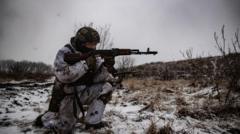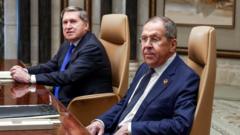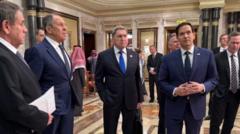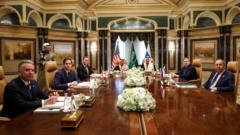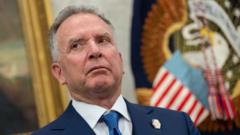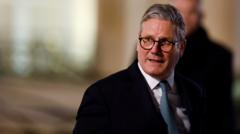In light of ongoing tensions, Hegseth’s statements reflect a shift in U.S. diplomatic strategy amid European defense responsibilities.
Hegseth Declares Return to Pre-War Borders ‘Unrealistic’ in Ukraine Conflict Resolution Debate

Hegseth Declares Return to Pre-War Borders ‘Unrealistic’ in Ukraine Conflict Resolution Debate
U.S. Defense Secretary emphasizes need for realism in peace negotiations between Ukraine and Russia.
In a notable address at a NATO assembly in Brussels, U.S. Defense Secretary Pete Hegseth made headlines by declaring that a return to Ukraine’s borders as they existed before 2014 is “an unrealistic objective” and that pursuing such a goal would only prolong the ongoing conflict with Russia. This marks Hegseth’s initial expansive trip abroad in his new role, where he met with Ukrainian officials and NATO counterparts to discuss the future of European security and the war’s resolution.
Stressing that President Trump’s administration is focused on a diplomatic resolution, Hegseth articulated that the path to durable peace lies in “a realistic assessment of the battlefield.” He contended that Ukraine's insistence on reclaiming all territories lost to Russia before 2014 could lead to further suffering rather than resolution. This position illustrates a strategic redirection in U.S. foreign policy whereby the administration acknowledges the complexities of the conflict while advocating for dialogue between Ukraine and Russia.
During his remarks, Hegseth also emphasized that Europe bears an essential burden in the defense of Ukraine, suggesting that European nations increase their financial contributions to military efforts, proposing an expenditure target of 5 percent of their GDPs. This comes as the United States grapples with its own national security concerns, particularly related to its response to China.
Interestingly, Hegseth voiced that the Trump administration does not endorse Ukraine’s aspirations for NATO membership, suggesting a potential recalibration of defense alignments within the region. The implications of Hegseth’s statements are vast, potentially altering the dynamics of international support for Ukraine as it navigates its future relations with both NATO and Russia.
The dialogue surrounding Hegseth's comments will likely remain a focal point for ongoing discussions regarding the geopolitical landscape in Eastern Europe as stakeholders continue to seek effective pathways toward peace. This is a developing story that will evolve with further insights from U.S. diplomatic engagements.



